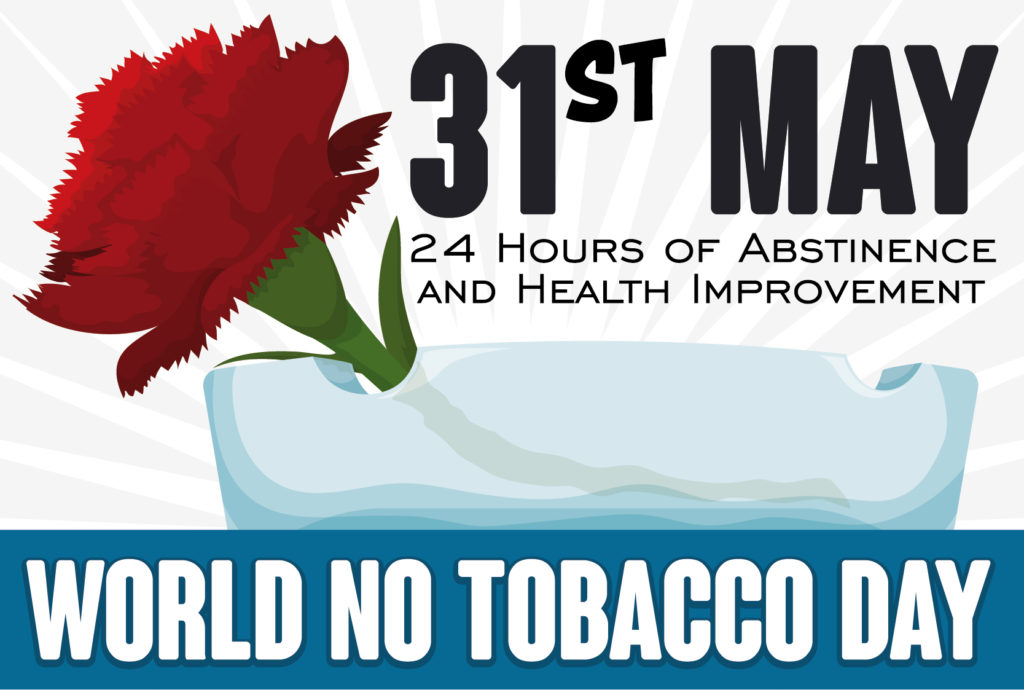Today is World No Tobacco Day, a day set aside since 1987 by the World Health Organization (WHO) to highlight the health risks associated with tobacco use and encourage governments to adopt effective policies to reduce smoking and other tobacco use.
According to the WHO, tobacco use kills more than 7 million people around the world each year, and that number is predicted to grow unless anti-tobacco actions are increased. In the U.S. each year, smoking results in an estimated 480,000 premature deaths, about one-third of which are due to cancer. And, in 2012, smoking accounted for $176 billion in health care-related expenditures in the our country.
This year, WHO is highlighting how tobacco threatens the development of nations worldwide, and it is calling on governments to implement strong tobacco control measures, including:
- Banning marketing and advertising of tobacco
- Promoting plain packaging of tobacco products
- Raising excise taxes
- Making indoor public places and workplaces smoke-free
According to a new WHO report titled “Tobacco and Its Environmental Impact: An Overview,” tobacco waste contains over 7,000 toxic chemicals, including human carcinogens, that poison the environment. And, tobacco waste is the largest type of litter by count globally. Cigarette butts account for 30–40% of all items collected in coastal and urban clean-ups.
According to the WHO, tobacco threatens all people, and national and regional development, in many ways, including:
- Poverty: Around 860 million adult smokers live in low- and middle-income countries. Many studies have shown that in the poorest households, spending on tobacco products often represents more than 10% of total household expenditure – meaning less money for food, education and healthcare.
- Children and education: Tobacco farming stops children attending school. 10%–14% of children from tobacco-growing families miss class because of working in tobacco fields.
- Women: 60%–70% of tobacco farm workers are women, putting them in close contact with often hazardous chemicals.
- Health: Tobacco contributes to 16% of all noncommunicable diseases (NCDs) deaths.
“Tobacco threatens us all,” says WHO Director-General Dr Margaret Chan. “Tobacco exacerbates poverty, reduces economic productivity, contributes to poor household food choices, and pollutes indoor air.”
“Tobacco is a major barrier to development globally;” says Dr. Douglas Bettcher, director of WHO’s Department for the Prevention on NCDs. “Tobacco-related death and illness are drivers of poverty, leaving households without breadwinners, diverting limited household resources to purchase tobacco products rather than food and school materials, and forcing many people to pay for medical expenses.”
What is the American Cancer Society doing to end this public health threat?
- Our Center for Tobacco Control is playing a leadership role, domestically and globally, in accelerating the reduction of tobacco use and elimination of tobacco-caused cancers and death.
- Researchers in our Economic and Health Policy Research program (EHPR) continue their innovative research on the economic and policy aspects of tobacco control. In particular, the team has developed world-leading expertise on the illicit trade of tobacco products; the effects of international trade and investment agreements on tobacco control; tobacco taxation; tobacco’s impacts on poverty and development, which includes the economics of tobacco farming; and the dynamics around the affordability of tobacco products. The team also participates actively in global capacity-building efforts in these and related area
- At home in the U.S., ACS CAN advocates have worked hard to ensure passage of laws raising tobacco excise taxes. Nationwide, a 10% increase in price reduces overall cigarette consumption by 3% to 5% and youth prevalence by 6% to 7%. Tax increases are particularly effective for low-socioeconomic status and/or young smokers who are more price sensitive than other smokers. In addition, such increases can also form an important revenue source for government-funded health care or tobacco control programs.
- We help people quit smoking through Quit For Life, a collaboration between ACS and Optum. This phone-based coaching and web-based learning support service is offered by 26 states and more than 700 employers and health plans throughout the U.S. This program has helped more that 1 million tobacco users make a plan to quit for good.
- Through the American Cancer Society’s Center for Tobacco Control, the Tobacco-Free Generation Campus Initiative (TFGCI) is providing grants to accelerate and expand the adoption and implementation of 100% smoke- and tobacco-free policies on college and university campuses across the nation.
- ACS CAN also is supporting graphic warning labels, however tobacco companies are challenging this requirement in court. The Society, ACS CAN, and other tobacco control collaborators have filed a lawsuit against the FDA to force the implementation of this provision.
- Thanks to the work of ACS CAN and other tobacco control advocacy groups, almost 60% of the U.S. population is covered by a comprehensive law that prohibits smoking in all non-hospitality workplaces (such as offices, factories, and warehouses), restaurants, and bars.
- And, let’s not forget that early Society epidemiologic studies provided some of the strongest evidence linking smoking with lung cancer and higher overall death rates. This evidence led to the Surgeon General’s landmark 1964 conclusion that smoking causes lung cancer, helping drive a decline in adult smoking rates from over 40% in 1964 to less than 20% today. American Cancer Society epidemiologic studies continue to document the ongoing health impact of smoking.

